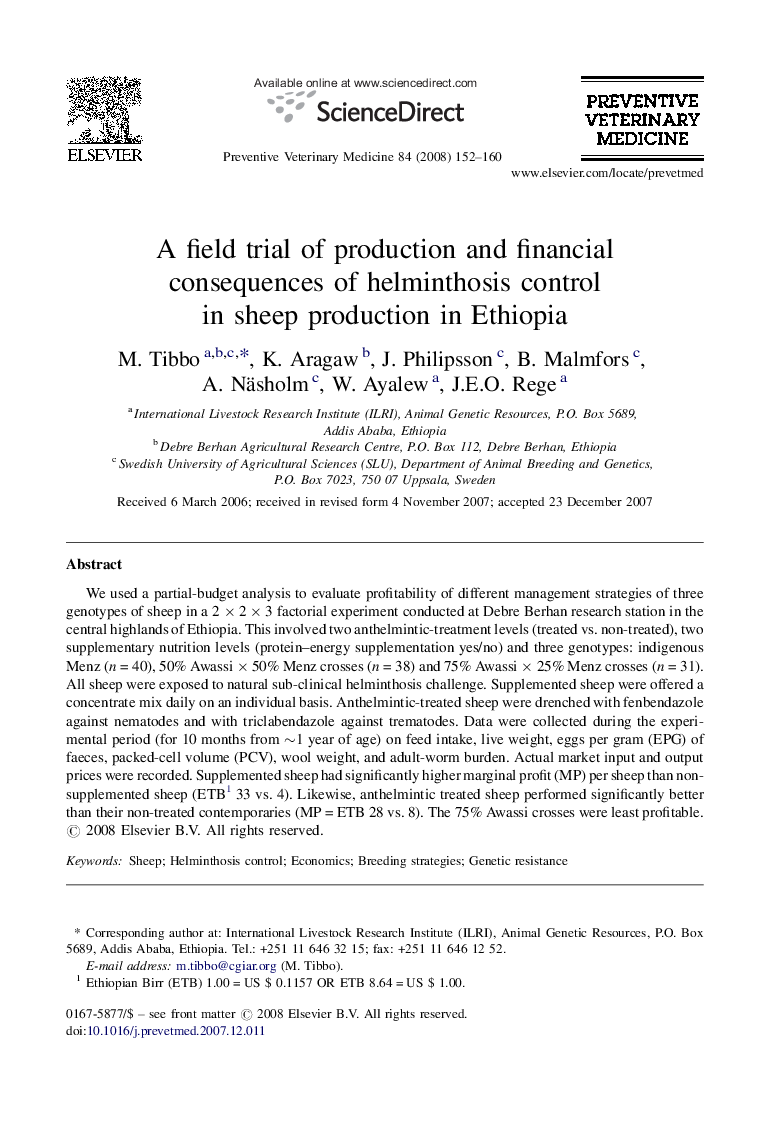| Article ID | Journal | Published Year | Pages | File Type |
|---|---|---|---|---|
| 2453388 | Preventive Veterinary Medicine | 2008 | 9 Pages |
We used a partial-budget analysis to evaluate profitability of different management strategies of three genotypes of sheep in a 2 × 2 × 3 factorial experiment conducted at Debre Berhan research station in the central highlands of Ethiopia. This involved two anthelmintic-treatment levels (treated vs. non-treated), two supplementary nutrition levels (protein–energy supplementation yes/no) and three genotypes: indigenous Menz (n = 40), 50% Awassi × 50% Menz crosses (n = 38) and 75% Awassi × 25% Menz crosses (n = 31). All sheep were exposed to natural sub-clinical helminthosis challenge. Supplemented sheep were offered a concentrate mix daily on an individual basis. Anthelmintic-treated sheep were drenched with fenbendazole against nematodes and with triclabendazole against trematodes. Data were collected during the experimental period (for 10 months from ∼1 year of age) on feed intake, live weight, eggs per gram (EPG) of faeces, packed-cell volume (PCV), wool weight, and adult-worm burden. Actual market input and output prices were recorded. Supplemented sheep had significantly higher marginal profit (MP) per sheep than non-supplemented sheep (ETB1 33 vs. 4). Likewise, anthelmintic treated sheep performed significantly better than their non-treated contemporaries (MP = ETB 28 vs. 8). The 75% Awassi crosses were least profitable.
